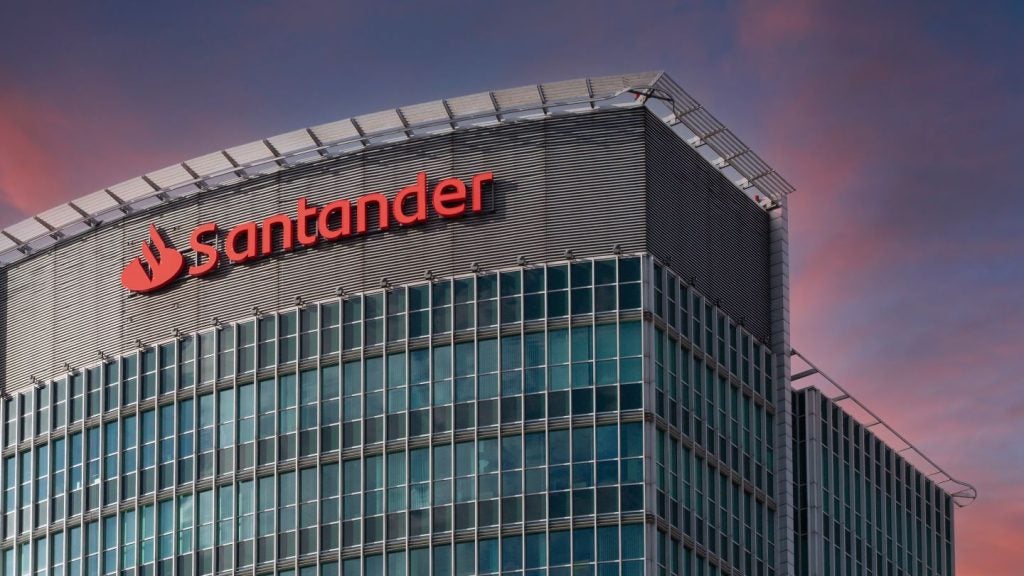banking markets around the world, reflected in some truly dire
stock market performances. Year-to-date, Wells Fargo has been the
best performer out of a selected bunch of international bank stocks
and the US is far from the worst performing market overall. Hugh
Fasken reports.
 In one of the worse years
In one of the worse years
for banking markets in living memory, the worst performing market
is still a surprise: the Netherlands, for decades one of the more
stable, even bullish markets driven by three of the world’s more
admired banking groups (ING, ABN AMRO and Rabobank).
But given that Rabobank is unlisted and ABN AMRO has long been
absorbed into the broken remains of Royal Bank of Scotland and
Fortis, the Netherlands is largely a one-trick market – and ING has
had a horrendous year. The shine has come off the ING juggernaut in
dramatic style: its share price has fallen by 80 percent across the
year to 5 December, a stark indictment of market sentiment towards
its future earnings capabilities.
ING, which now makes most of its money from banking and not
insurance (see RBI 598), has been looking to build a
global retail banking business over the past few years to
complement the nine markets in which ING Direct is established. ING
has taken stakes in or set up shop in a diverse group of markets
such as Thailand, Turkey and Romania (it also has a 19.9 percent
stake in Bank of Beijing), and is one year into a five-year, €1
billion ($1.3 billion) revamp of its domestic Dutch franchise.
But ING as a whole lost €478 million in the third quarter, its
first-ever quarterly loss, bringing an unwelcome urgency to its €10
billion cash injection from the Dutch state in October. Its retail
banking unit’s underlying third quarter profit before tax declined
35.5 percent to €420 million; ING Direct, the jewel in the ING
crown, dropped 140 percent to record a loss of €47 million (see
RBI 602).
Next year, 2009, will be a challenging one for ING. It’s
unlikely the group will start to sell off assets though if its core
markets continue to depress then it could find itself in yet more
trouble: it isn’t yet in the same difficult territory as ABN AMRO
or Fortis, but it finds itself uncomfortably close.

US Tariffs are shifting - will you react or anticipate?
Don’t let policy changes catch you off guard. Stay proactive with real-time data and expert analysis.
By GlobalDataIn contrast to ING and the vast majority of other banking
groups, Wells Fargo has managed to chart its way through 2008
relatively well, and the markets have been seemingly impressed by
its conservative, solid business model and with its cheap
acquisition of Wachovia.
In a year that has torn apart the upper echelons of the US
banking industry – and seen the end of Washington Mutual, Wachovia,
IndyMac Bank, National City and Merrill Lynch, among others – Wells
Fargo has come out on top. The main reason? It avoided direct
involvement in subprime lending and steered clear of indirect
exposure via capital markets.
And despite the US market being the source of the global credit
crises and US banks the first to be hit by the savage economic
downturn, four of the top 10 better performers in terms of share
prices are based in the US – six, if you include Canada’s Royal
Bank of Canada and Toronto-Dominion Financial, both of which have
substantial US operations. Moreover, the US market as a whole is
very far from being the worst performing market: its average return
of -48.6 percent puts it far ahead of much more disastrous
countries such as Ireland, Russia, Germany and Greece.
The two worst performing US-based players are Citigroup and Bank
of America (BofA). Perhaps the bigger surprise here is BofA, long
held aloft as one of the most respected retail banking outfits in
the world.
But a string of billion-dollar acquisitions by CEO Kenneth Lewis
over the past 18 months (LaSalle, Countrywide Financial and Merrill
Lynch) have all deepened BofA’s exposure to the US and stretched
the group’s balance sheet at a time of continuing US economic woes.
On 4 December, BofA’s shareholders approved the all-share
acquisition of Merrill Lynch – the deal price, initially announced
as $50 billion, has fallen to $19 billion off the back of BofA’s
collapsing stock. “When this transaction closes, Bank of America
will have the premier financial services franchise anchored by the
cornerstone relationship products and services of deposits, credit
and debit cards, mortgages and wealth management,” said Lewis.
With Merrill Lynch, BofA will have the largest wealth management
business in the world with 20,000 financial advisers and $2.5
trillion in client assets. The group will derive 48 percent of
revenues from its global consumer and small business unit (over 80
percent of which will come from the US), 32 percent from global
corporate and investment banking, and 20 percent from global wealth
management.
Lewis is clearly taking a big bet on the future health of the US
economy, but it is far from clear how the market will evolve in
2009. On 10 December, Jamie Dimon, CEO of JPMorgan Chase, said that
his bank had had a terrible fourth quarter, prompting further
panic. On 11 December, Lewis announced BofA would be making 35,000
people redundant, 11 percent of the new group’s workforce, across
all areas over the next three years.
Other big fallers
Four of the biggest names in UK and German banking litter the
foot of the share price table: Deutsche Bank (share price down 73
percent), Commerzbank (75 percent), Royal Bank of Scotland (85
percent) and HBOS (88 percent).
The German banking market has been deeply affected by the credit
crisis, and a rash of recent mergers and acquisitions – including
Deutsche investing in Deutsche Postbank and Commerzbank picking up
the Dresdner franchise from Allianz – has done little to quell
negative feelings towards a German market considered uncompetitive
and still in need of widespread economic structural changes.
Last month, the CEO of Deutsche Bank, Josef Ackerman, announced
plans to place a greater focus on retail banking as part of a
wide-ranging policy overhaul, designed to bolster capital, cut debt
and exit unprofitable businesses (see RBI 603). In
October, fresh from its controversial acquisition of a 29.75
percent stake in Deutsche Postbank – with an option to buy another
18 percent before 2011 and first refusal on the remaining 52.25
percent (see RBI 599, 598) – Deutsche Bank announced
additional plans for its own retail banking business in Germany,
Italy and Poland to 2012. The programme calls for the opening of
roughly 400 new branches across Europe over the next three years,
150 in Germany alone.
Deutsche Bank has targeted a total of 18 million customers under
its Private & Business Clients unit by 2012, and intends to
increase divisional income before taxes from €1.1 billion in 2007
to €2.0 billion over the period.
A ‘state bank’ of Britain?
In the UK, a market saddled with £1.5 trillion in consumer debt
and collapsing asset prices, real concerns remain over the short-
to mid-term viability of the banking industry.
Talking about Royal Bank of Scotland (RBS), which has total
group assets of over $3 trillion, analysts at investment bank
Keefe, Bruyette & Woods said: “Substantial question marks
remain over RBS’s ability to de-leverage an inflated balance sheet
into a deteriorating environment.
“Credit quality is also worsening across the group. It is clear
that RBS will undergo substantial restructuring, but until the
restructuring details emerge, assessing the future core earnings
power of the group will remain a challenge.”
Research conducted by RBI shows that RBS is now worth
more broken up than it is whole, and there have been growing calls
for it to sell its US subsidiary Citizens. Price estimates vary
from between $8 billion to $14 billion for a unit with some $161
billion in assets and $100 billion in deposits. RBS has also been
looking to sell its UK insurance division for the past six months;
it could also get a good price for its respected private banking
arm, Coutts.
With the UK government already owning 58 percent of RBS, along
with 100 percent of Northern Rock, and and now 40 percent of the
new Lloyds TSB/HBOS supergroup, the big question has become whether
or not the UK government should form a ‘state bank’ of Britain to
help with lending flows and offer a no-frills banking service to
stabilise the wider UK economy.
Such a proposal has been suggested by Jim O’Neill, the chief
global economist of investment bank Goldman Sachs, who argued that
the UK government needs to create a state bank that will provide
the vital credit that commercial banks cannot.








